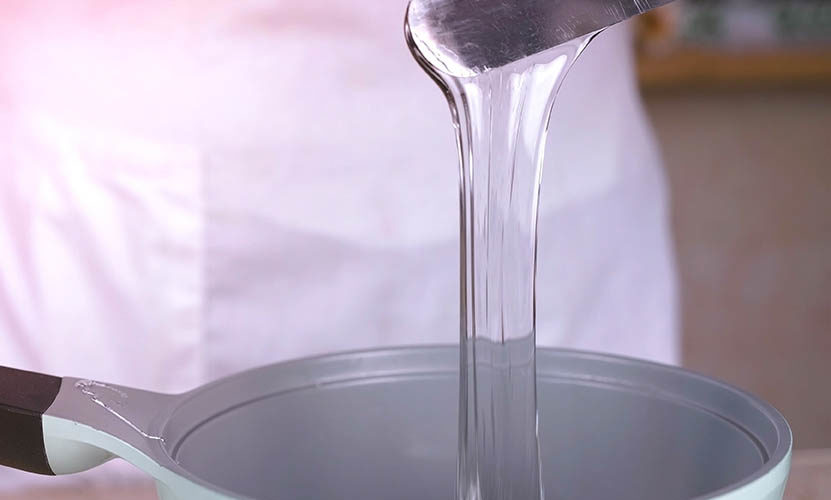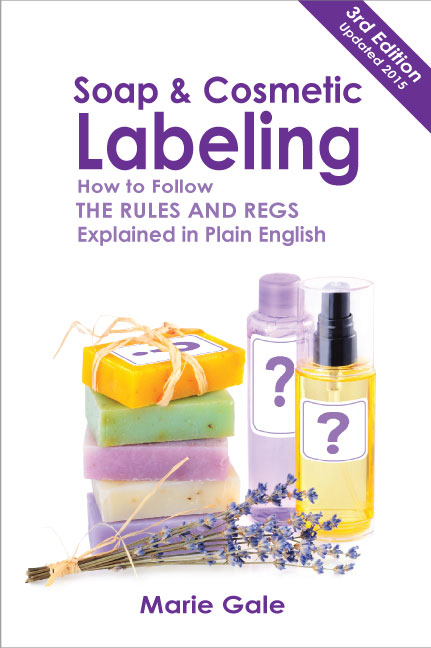Glycerin (also called glycerine) is normally sourced as the byproduct of other chemical processes, such as biodesiel production and soap making, which involve processing triglycerides from animal or plant sources. It can also be can be synthetically produced from petroleum sources.
The International Cosmetic Ingredient Dictionary considers glycerin to be a synthetic ingredient regardless of the source. This may be because it goes through multiple processes for extraction and refining. However, in some cases it might meet the definition of “natural derived” (from ISO 16128 – Natural and Organic Cosmetic Ingredients and Products).
It is a clear, sweet, odorless, viscous liquid. Technically, it’s a sugar alcohol. Glycerin is safe for human consumption and is an allowed food additive in most countries including the United States, Canada, Japan, and the European Union. (I use a mix of water, glycerin, and stevia to sweeten my tea.)
Uses
Nearly 100 years ago the primary uses of glycerin were to process smoking tobacco, to make nitroglycerine for explosives, and to make anti-freeze for automobiles. It was also used in smaller amounts in candy, gum, soft drinks, baked goods, cosmetics, drugs, bookbinding, and in the manufacture of textiles, paint, paper, floor coverings, printing rollers, and embalming fluid.
At one time the monthly consumption of glycerin was used as a measurement of the condition of general business!
Currently, glycerin is used in foods, as a humectant, a solvent, and a sweetener. It can be used as a sugar substitute (slightly more calories and slightly less sweet than sugar). Among other things, glycerin is used to keep frosting from getting too hard, as a thickener in liqueurs, and as a sweetener in baked goods.
In prescription and over-the-counter drugs, glycerin is used for a wide variety of purposes. It is found in some prescription wound and burn treatment materials. It is used in laboratories and in medical research. In cosmetics it is generally used to increase smoothness or lubrication, and as a humectant.
Other modern uses of glycerin include electronic cigarette (vape) liquids, botanical tinctures, filming underwater scenes, creating “smoke” effects in films, and much more.
And, of course, in cosmetics glycerin is used as a humectant, a moisturizer, and to improve the “feel” of cosmetic products.
It is a very versatile substance!
Glycerin From Soap
As noted, glycerin is a by-product of saponification. In commercial soap-making processes, the freed glycerin is purified and then sold separately. The commercial soap produced this way has a negligible percentage of glycerin in the final product. As a result, the soap bars tend to be harder.
The facilities and processes necessary to separate and purify glycerin are not available to soap handcrafters. That being the case, in small batch handcrafted soap the glycerin remains in the finished product. Bar soap with the glyercin still in it tends to be somewhat softer than soap where the glycerin has been removed. On the other hand, soap containing glycerin tends to be more moisturizing (less drying) because of the humectant properties of the glycerin.
Handcrafted Soap—How Much Glycerin?
You can actually (and fairly accurately) calculate how much glycerine there is in cold or hot process soap. This can be handy if you have decided to list your soap ingredients based on what comes OUT of the pot.
The amount of glycerin in a soap is directly proportional to the amount of sodium hydroxide (NaOH) or potassium hydroxide (KOH) that is used.
Amount of Glycerin
The formula for calculating the amount of glycerin is different for NaOH and KOH.
For NaOH soap:
Glycerin weight = 0.77 × (NaOH weight)
For KOH soap:
Glycerin weight = 0.55 × (KOH weight)
Percentage of Glycerin in a Batch
To calculate the percentage of glycerin in the batch (and therefore in the bars in the batch) first you need to know the total weight of the batch.
Total batch weight = fat/oil + NaOH + KOH + water + additives
Then calculate the percent of glycerin:



Leave a Reply